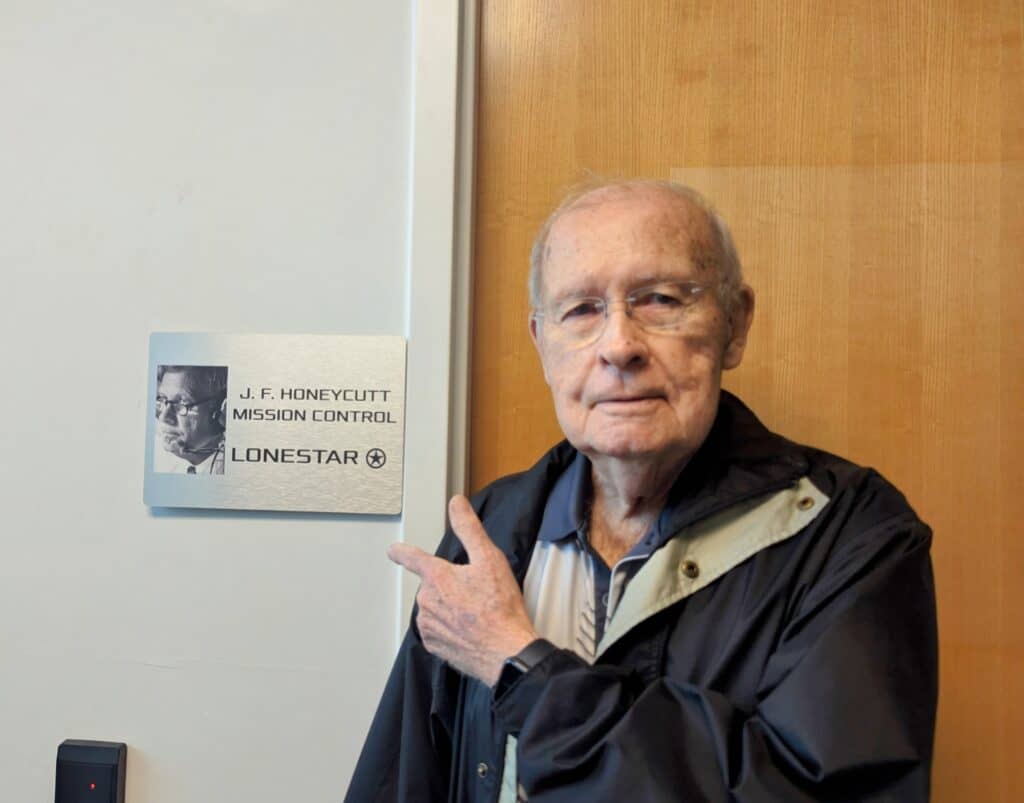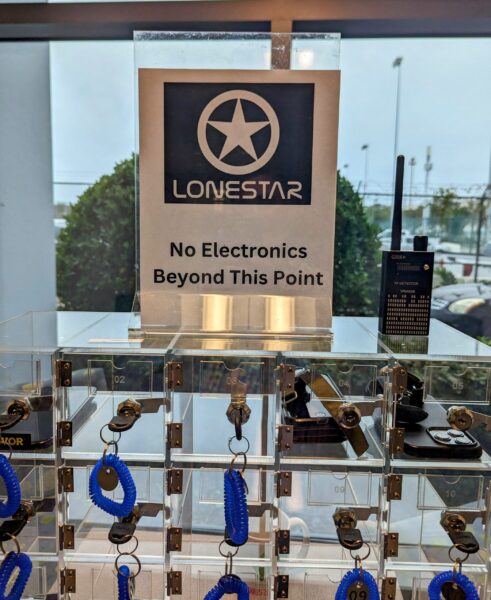A lunar-focused startup headquartered in St. Petersburg’s Innovation District recently opened its official mission control center, ahead of two scheduled missions to transmit data from the Moon.
Lonestar Data Holdings christened the vital facility after the NASA engineer whose foresight helped save the Apollo 13 lunar landing crew in 1970. Jay F. Honeycutt, 86, made the trek from Cocoa Beach to attend the Dec. 15 ceremony at the Maritime and Defense Technology Hub.
Chris Stott, founder and CEO of Lonestar, called the J.F. Honeycutt Mission Control’s opening a major milestone in his ambitious quest to store the world’s data on the Moon. The local startup’s first mission will launch from Cape Canaveral Jan. 12.
“It’s one thing to have an idea for a concept and then start planning and doing the engineering work, raising the funds,” Stott told the Catalyst. “But the one thing we needed to do that makes it so concrete is open mission control.
“It takes it from being, ‘Isn’t this great, but is it going to happen?’ to ‘Oh my goodness, this is actually happening.’”

Former NASA lead engineer Jay F. Honeycutt called Mission Control “the lifeblood of any space adventure.” Photo by Mark Parker.
Lonestar’s first payload arrived at Intuitive Machines’ Houston headquarters Dec. 14. The publicly traded company is flying the data center to the moon, where it will transmit the Declaration of Independence.
Mission Control will receive the Bill of Rights from the lunar lander. It will also include onboard storage for the State of Florida, Lonestar’s first customer.
Stott credited state officials for realizing the mission’s benefits. “We’ve got natural disasters, human-made disasters, we’re growing so fast – how do we protect ourselves?” he said.
“So, they bought out the entirety of our first mission,” Stott added. “This is Florida leveraging investments made in space over the last 60 to 70 years in our state. And that’s why we’re here in St. Pete.”
A serendipitous namesake
Honeycutt earned the Exceptional Service Medal for his work with 1970’s Apollo 13 mission. He invented the training protocols and simulations that allowed a stranded space crew to return home.
Honeycutt taught Stott when he served as director of the Kennedy Space Center. Lonestar recently hired Stephen Eisele, a former executive with Virgin Orbit, to serve as its president.
Honeycutt trained Stephen’s uncle, Don Eisele, a member of the Apollo 7 mission. Charlie Duke, a member of Lonestar’s board of advisors and an Apollo 16 moonwalker, also served under Honeycutt.
Stott explained that Duke was the first to “dial into” Mission Control. He talked to Honeycutt, a friend for over 50 years.

Lonestar CEO Chris Stott (left) speaks with Jay F. Honeycutt, who he considers a mentor. Photo by Mark Parker.
Stott hopes the bevy of surrounding talent gives NASA officials “good faith that we know what we’re doing. That even though we’re a small startup on a big journey, we always turn to the very best people you can ever find,” he said.
“And that’s what Jay (Honeycutt) taught me,” Stott continued. “He said the best thing to do if you’re in any kind of management situation is … surround yourself with really intelligent people, give them a clear role and delegate.”
Inside Mission Control
Federal regulations limit public access inside Mission Control. Visitors, including Stott, must place electronic devices in a locked box outside the room.
An electromagnetic frequency detector ensures compliance. However, chief engineer Jim Burns-Montante publicly shared some insight.
Burns-Montante said he spent the last nine months “on and off” designing the small but vital facility. Preventing power outages, ensuring network connectivity, software development and “what does it need now versus what we want it to have so we can grow later” were critical aspects.
He said Lonestar decided to create a “pop-up” Mission Control, like SpaceX’s initial center inside an Airstream trailer. That allows increased portability and flexibility during major hurricanes, although Burns-Montante credited the Hub’s ability to withstand storms.

An electromagnetic frequency scanner (top right) detects potential listening devices. Photo by Mark Parker.
While the local system directly links to Intuitive Machines’ Mission Control room in Houston, Burns-Montante said Lonestar’s software focuses on keeping the onboard data safe. “The lander is their baby,” he added.
“We just want … to see what they’re showing us because they’re the first American company trying to make landfall on the Moon, and we want them to win,” Burns-Montante said. “The major thing that we care about … is holding data. So, is people’s data safe? Is our data secure? Is it transmittable, and are there any losses? And the answers should be ‘yes,’ ‘yes,’ ‘yes’ and ‘no.’”
What’s next?
Stott called space the promised land. He also noted that interest in moon expeditions inexplicably waned for over five decades, and nations like China have realized there are myriad reasons to return.
Stott compared landing on the moon to establishing an embassy in a foreign country. While the moon is not sovereign, the licensing state controls two kilometers around its landed equipment.
He said China’s nuclear-powered rovers are actively claiming territory as part of a “massive new space race.”
Lonestar is already preparing for its second mission in March 2024. That will test disaster recovery of stored data for the State of Florida.
Stott repeatedly credited St. Petersburg and Hub officials for helping Lonestar accomplish its goals. “It’s been the perfect fit for us,” he said. “St. Pete is the only place in the world where cyber and space comes together.”
The post St. Petersburg enters the new space race first appeared on St Pete Catalyst.
The post St. Petersburg enters the new space race appeared first on St Pete Catalyst.
